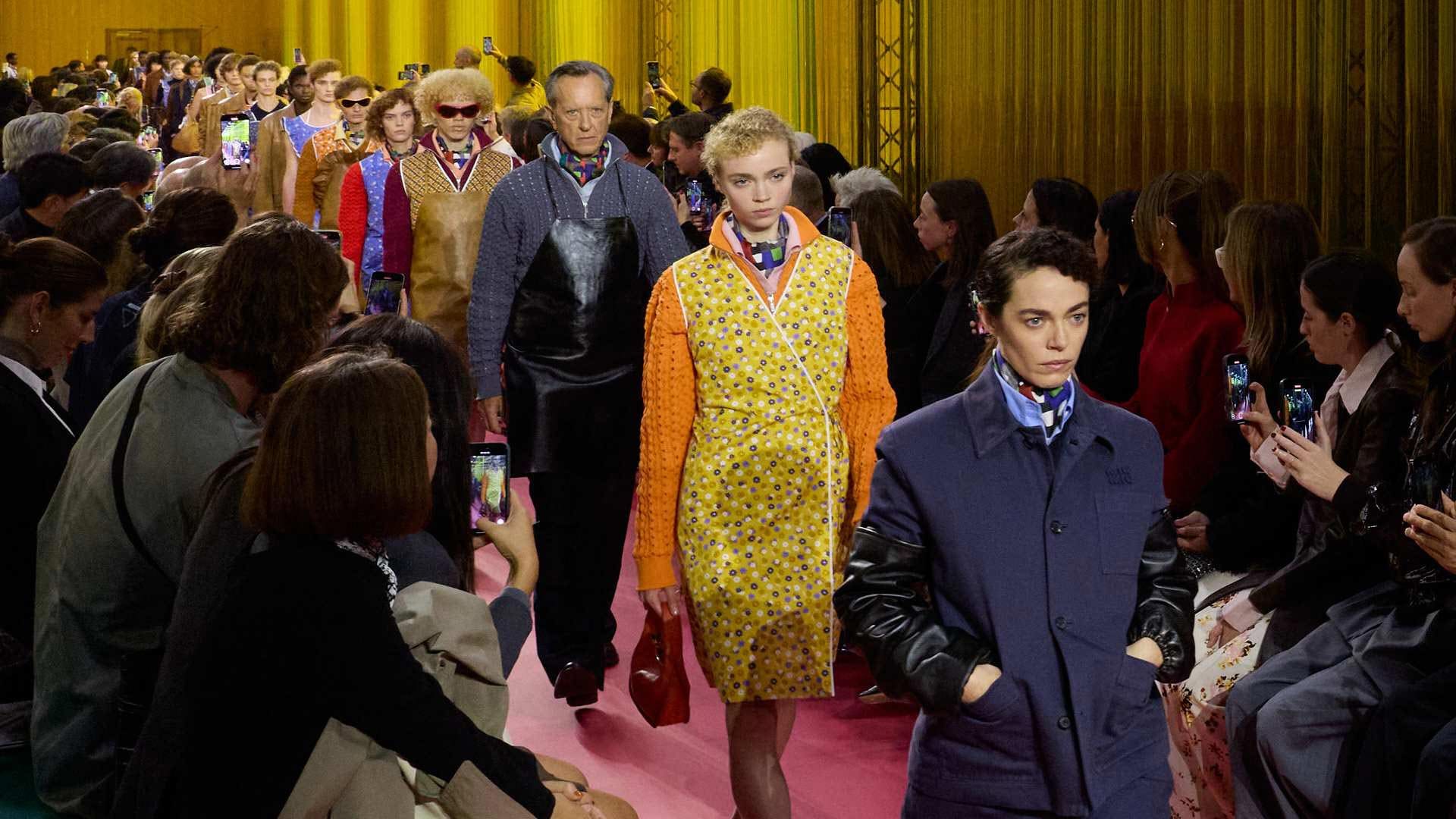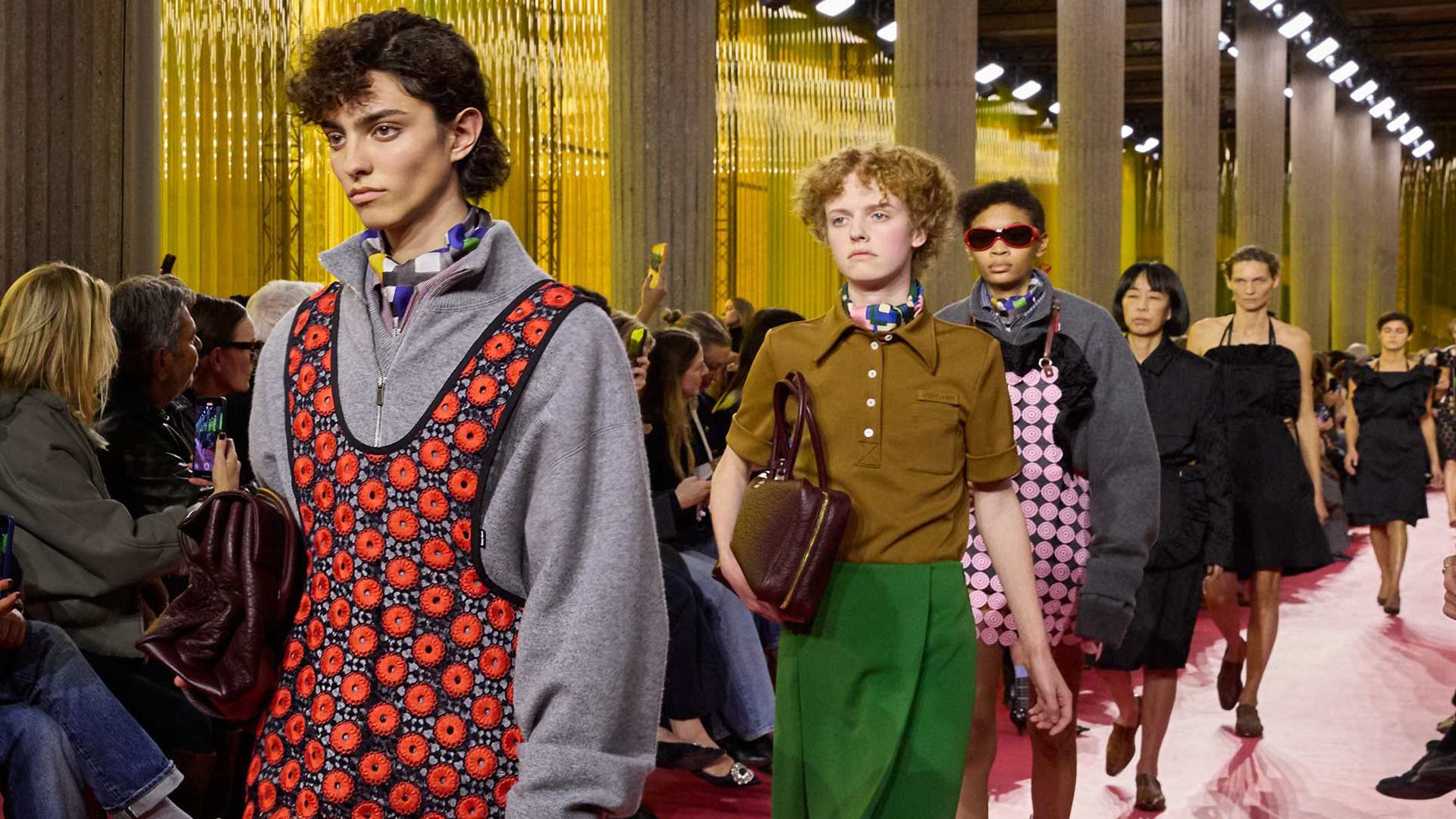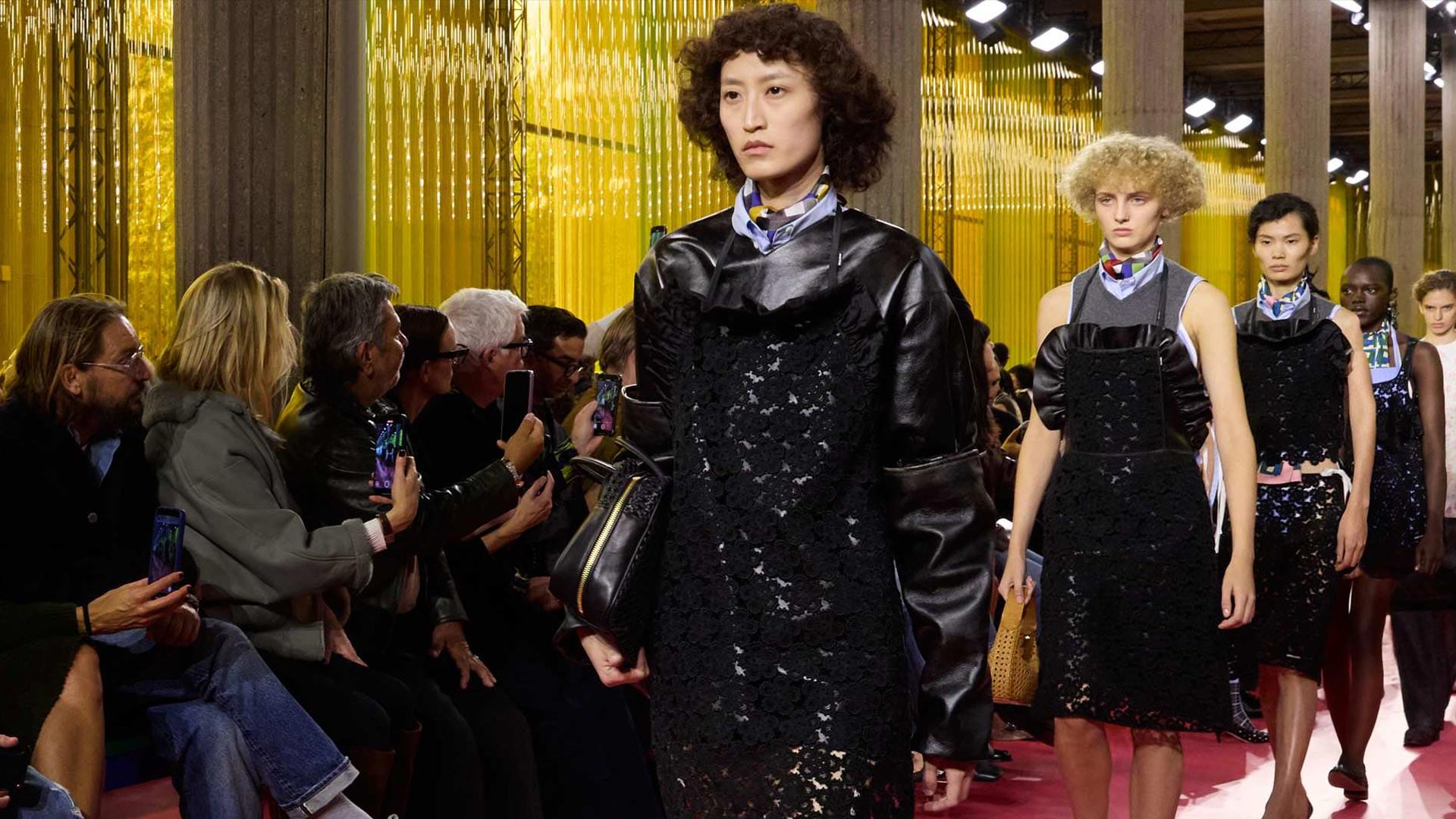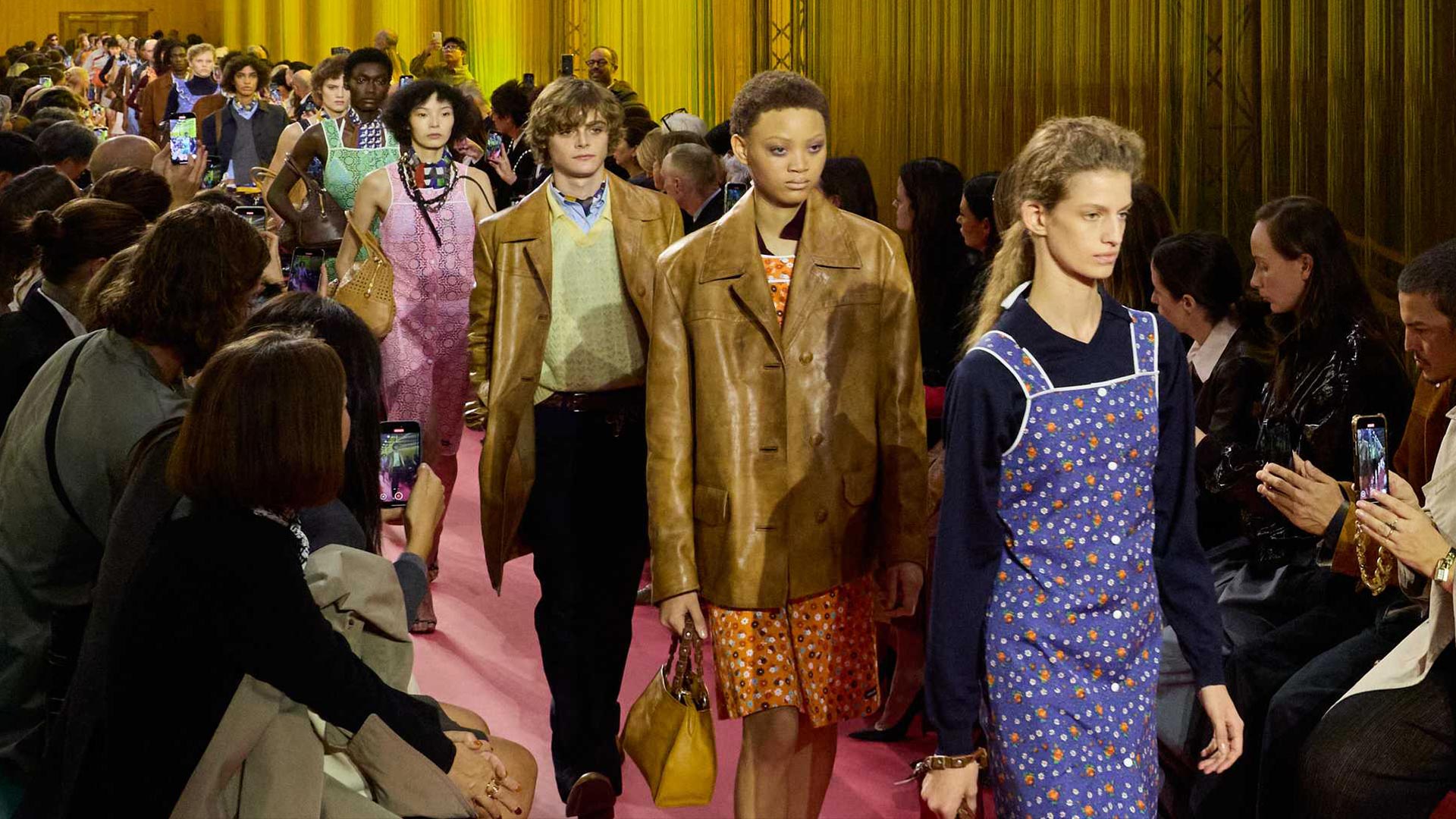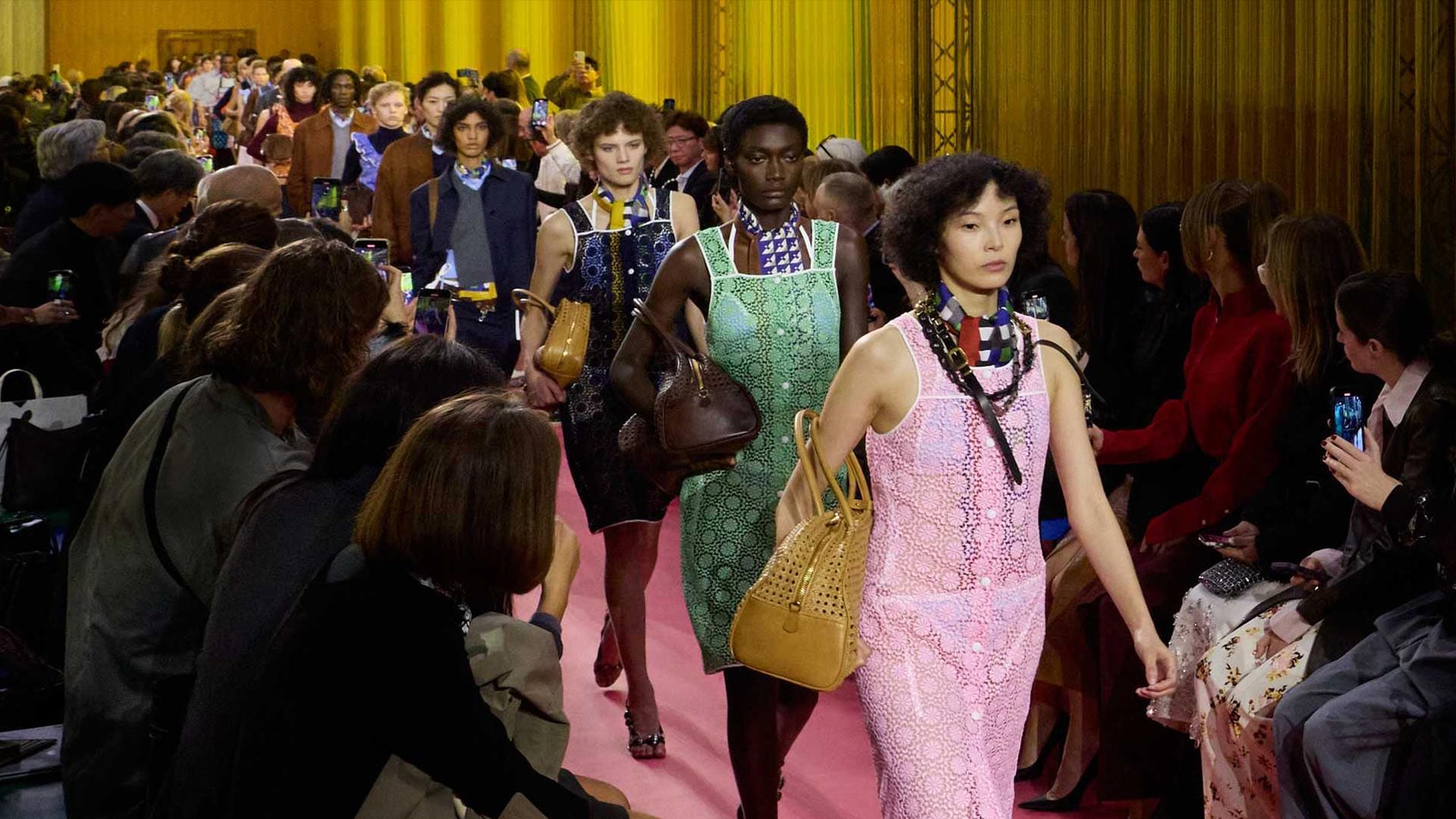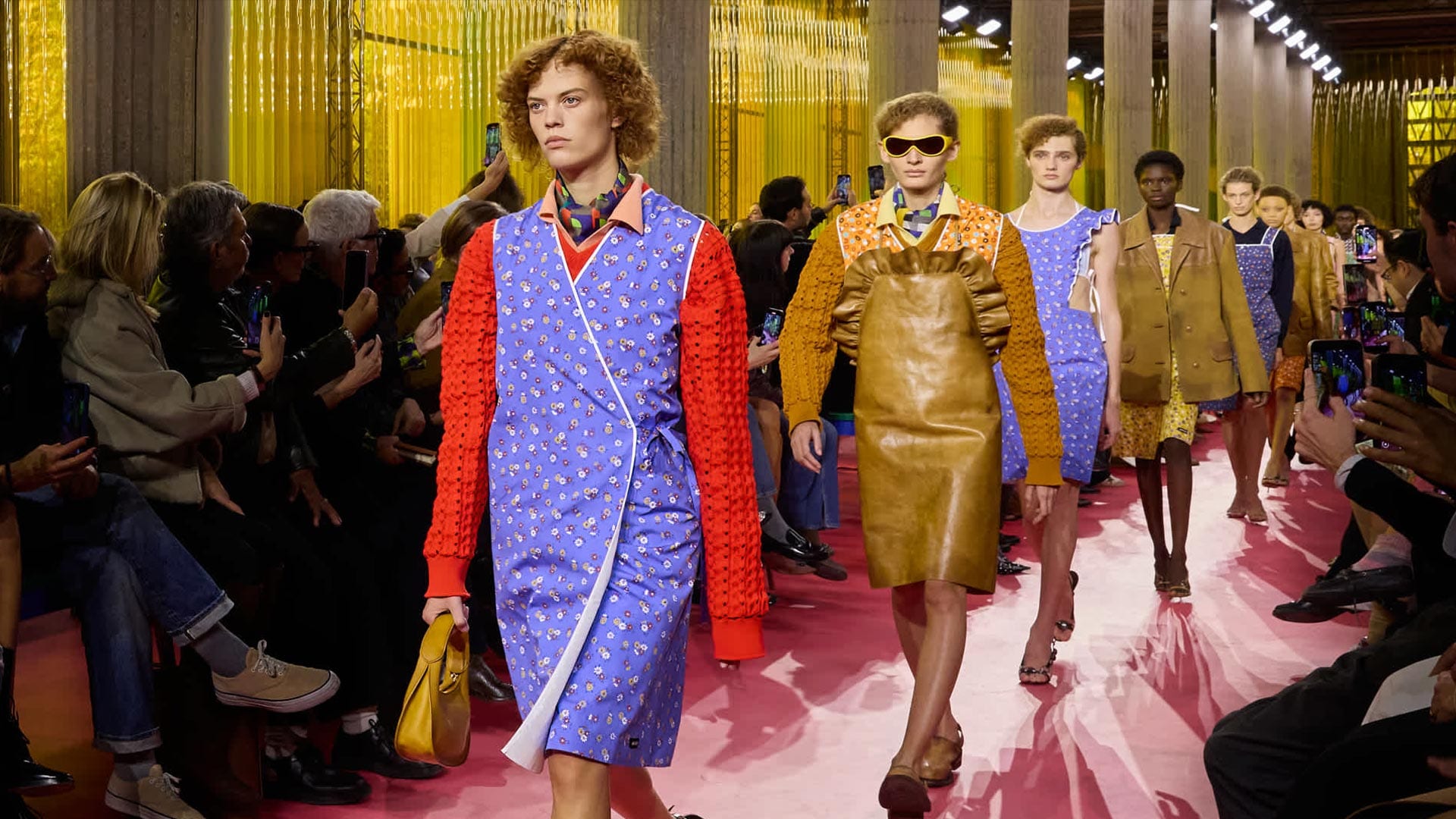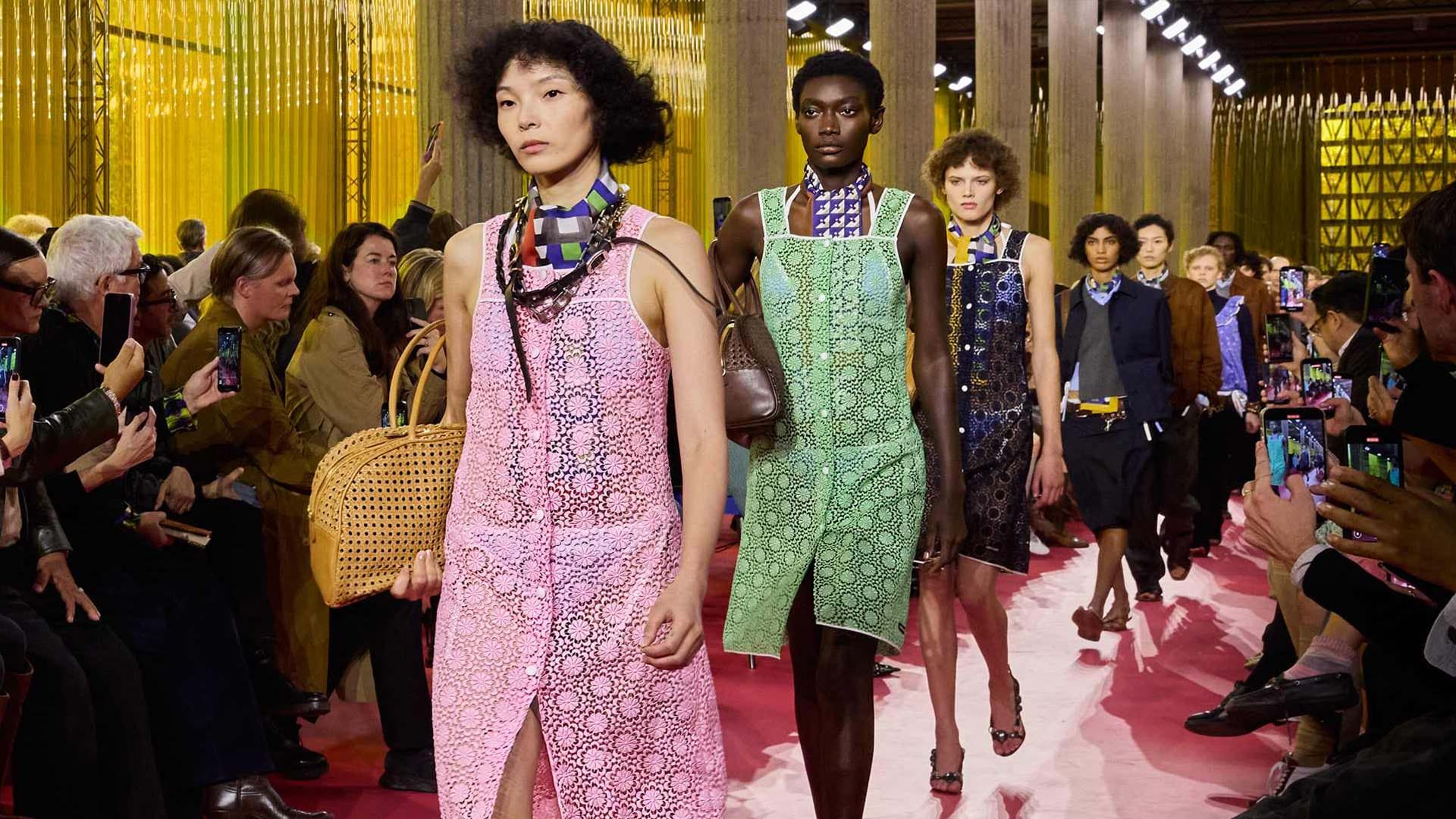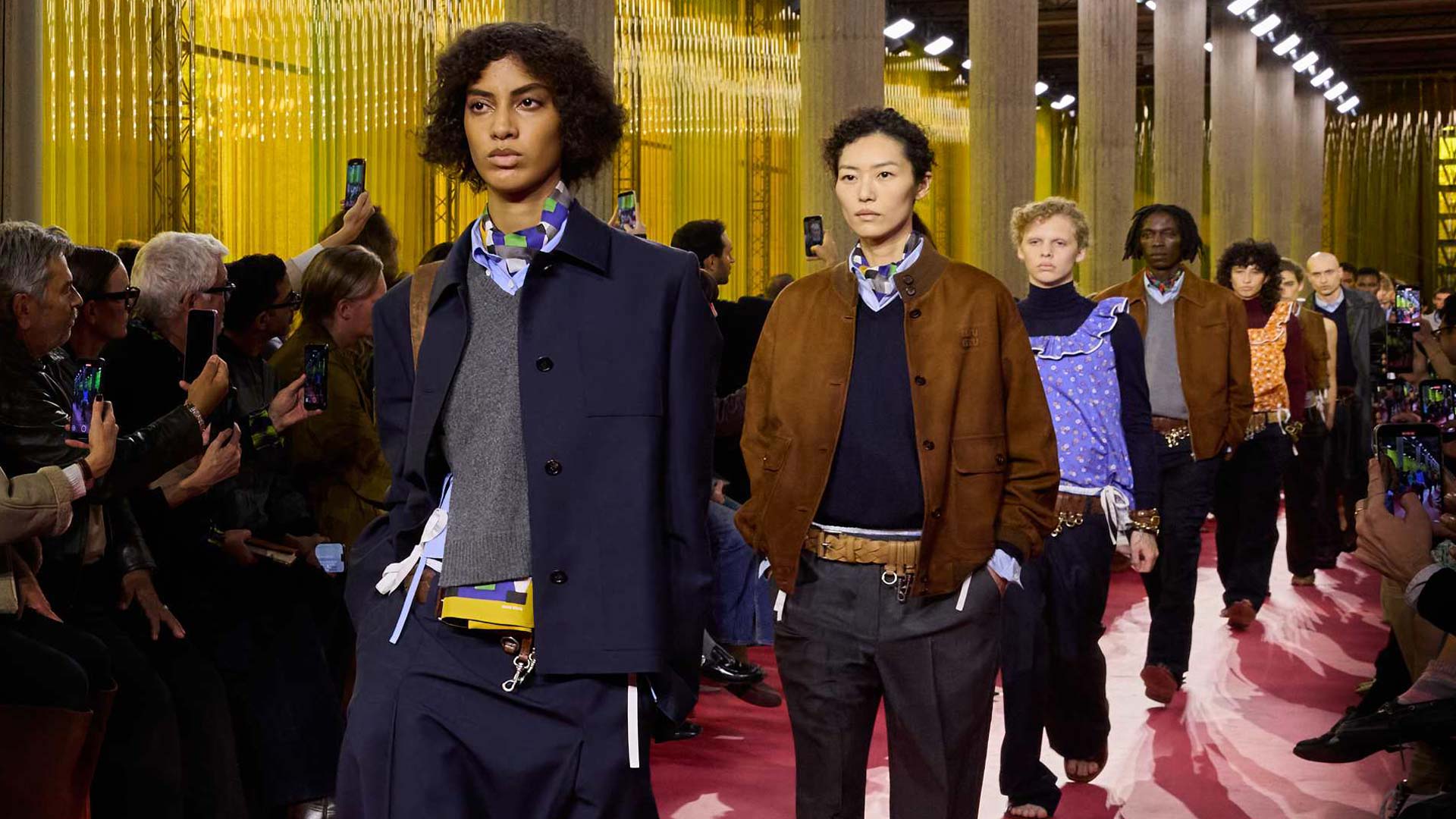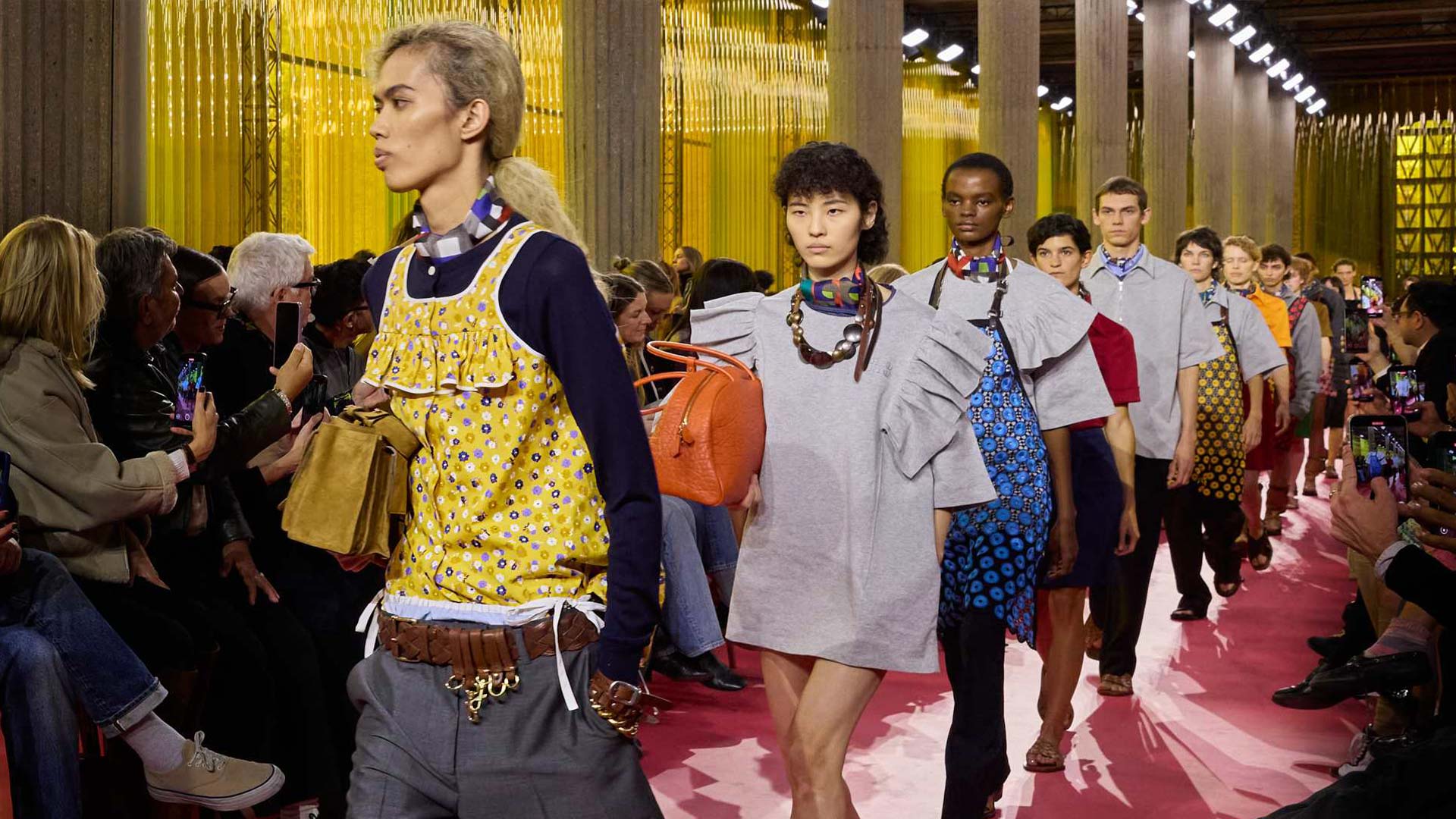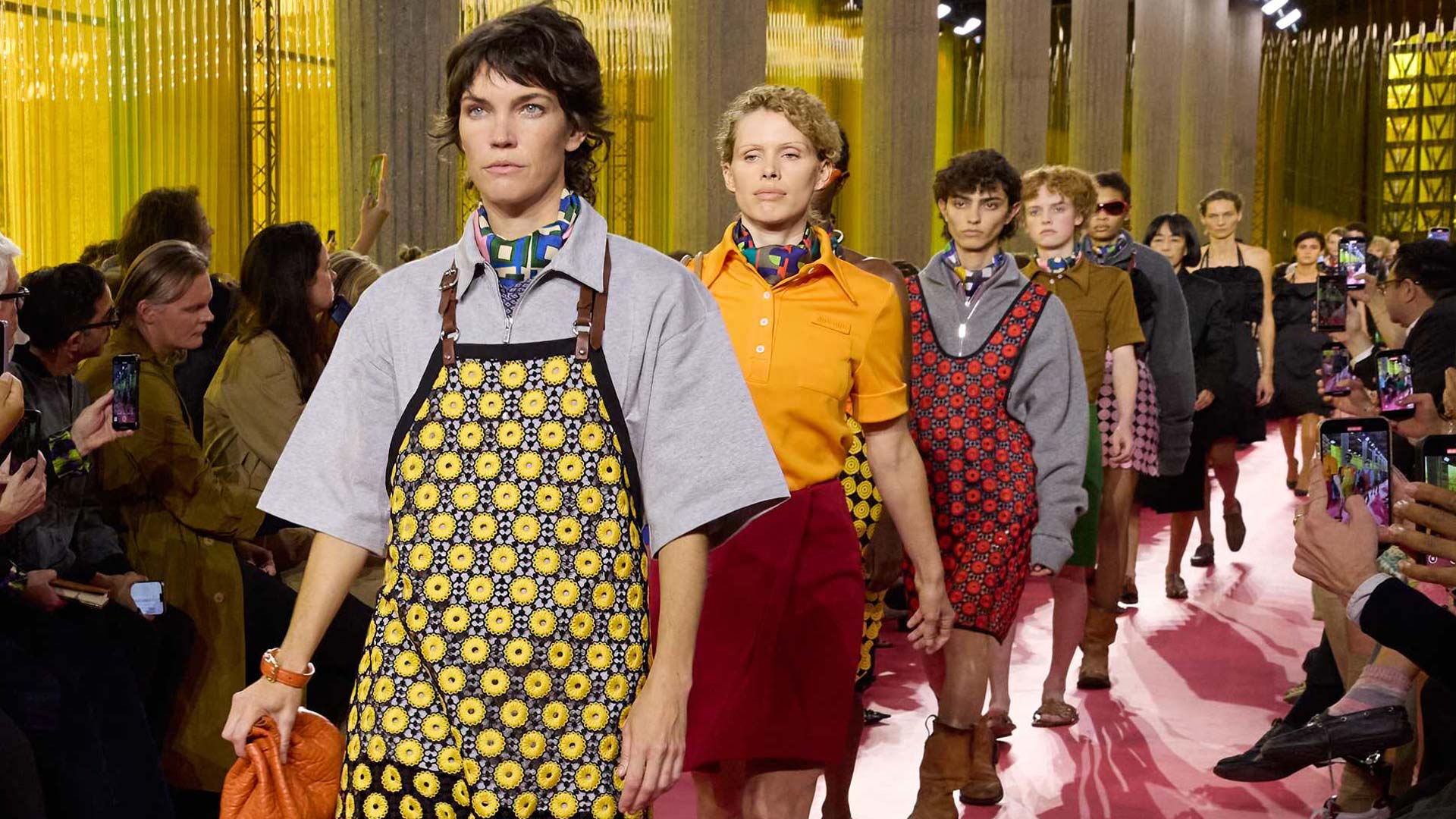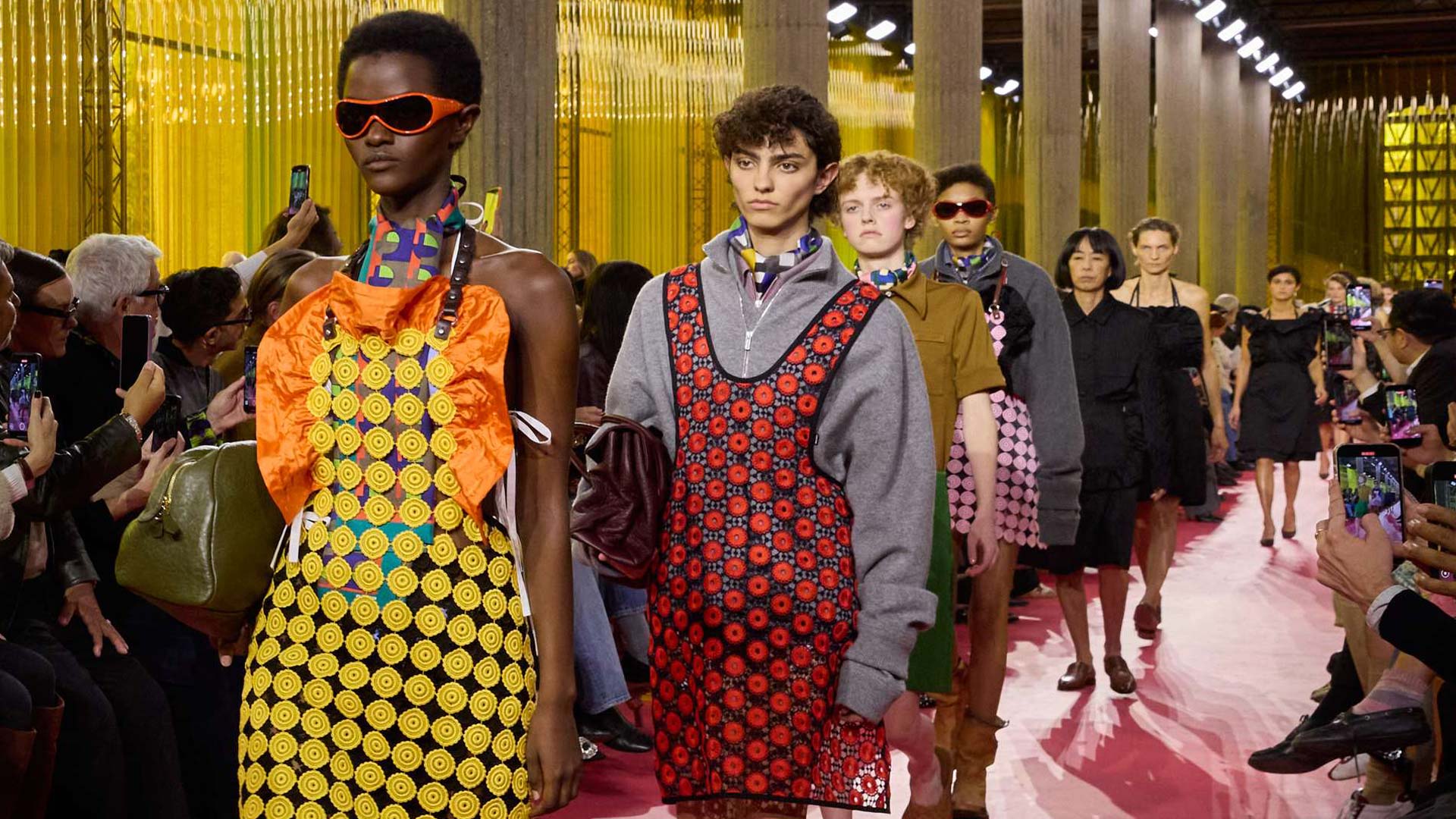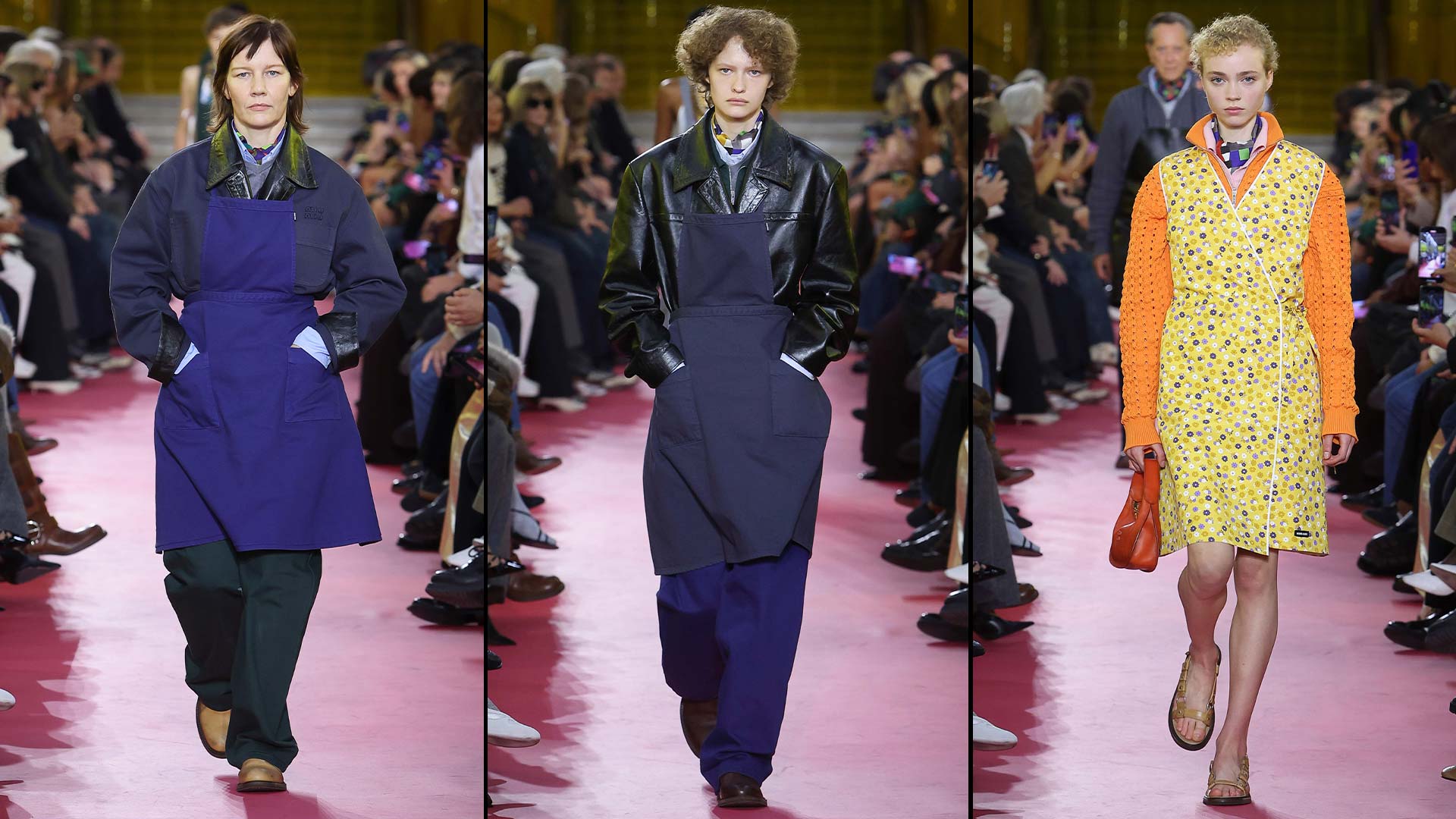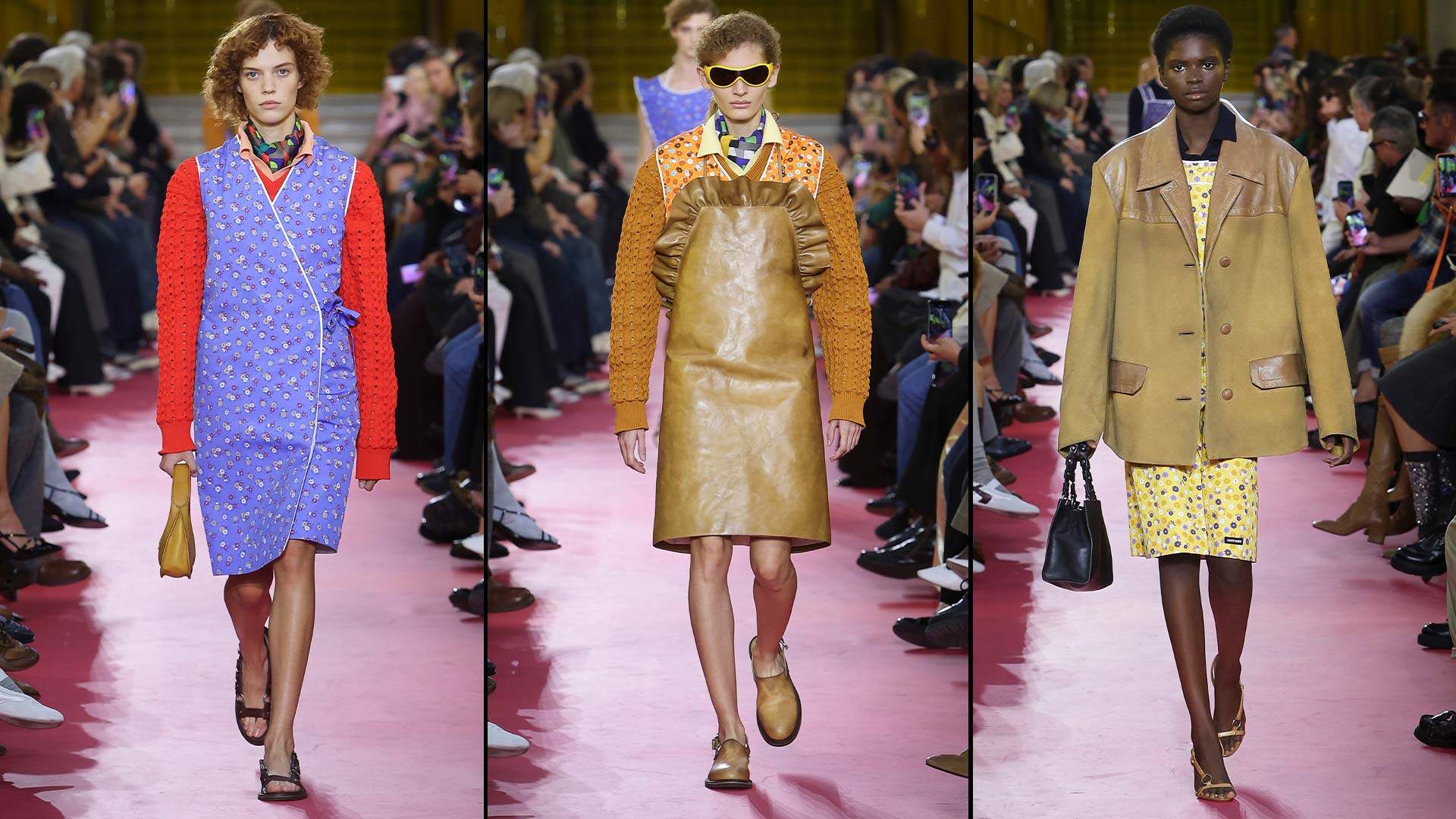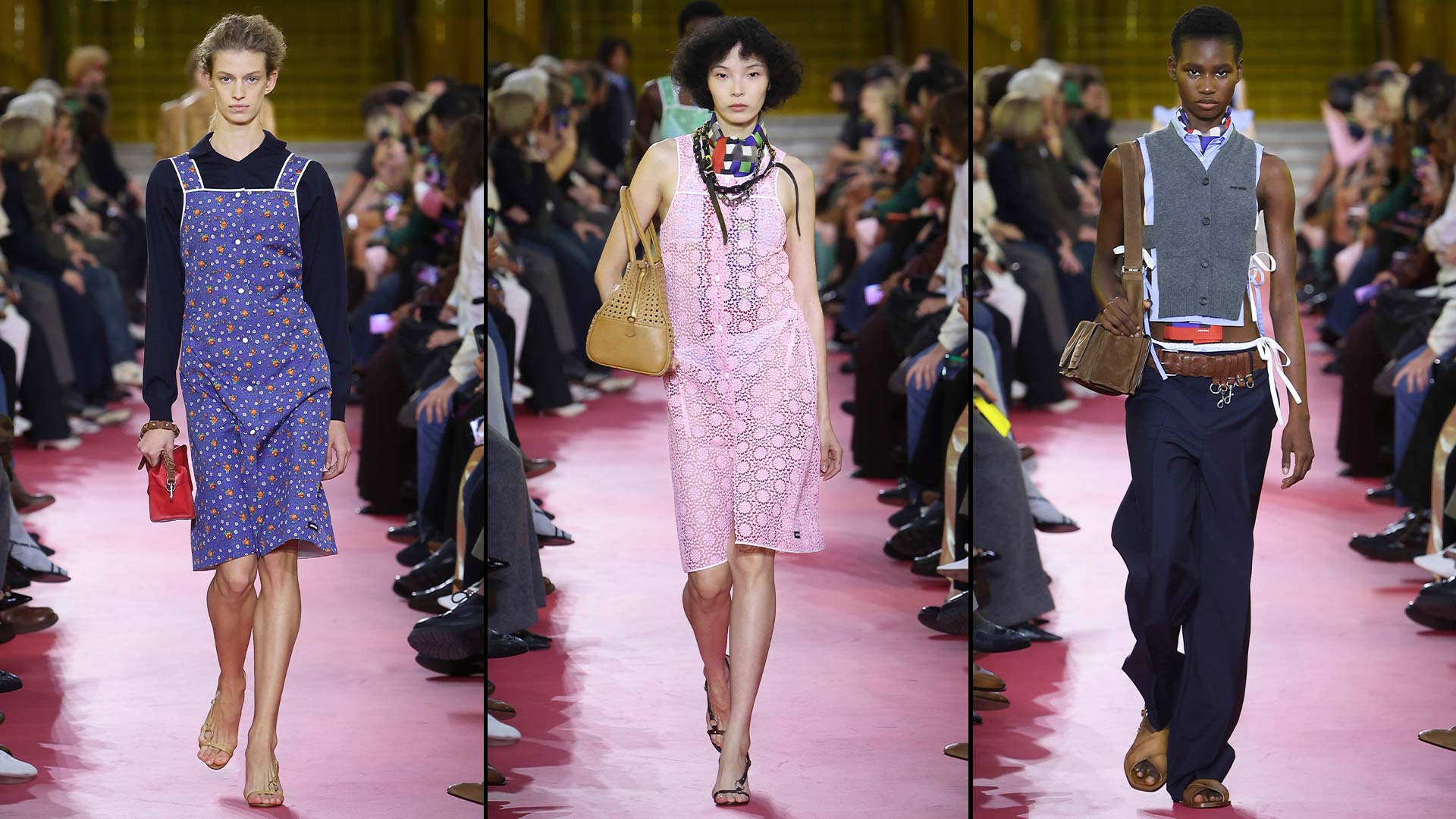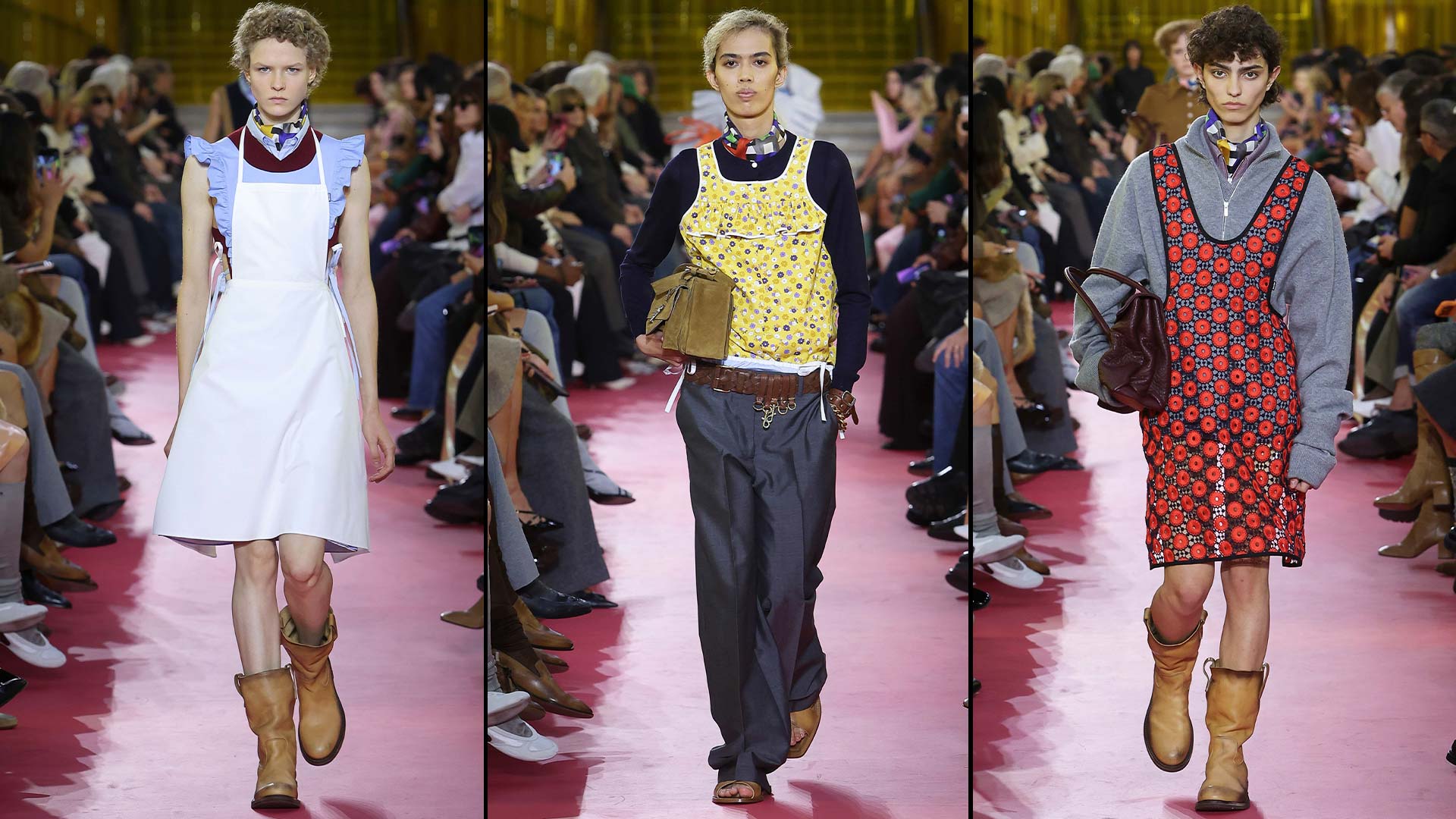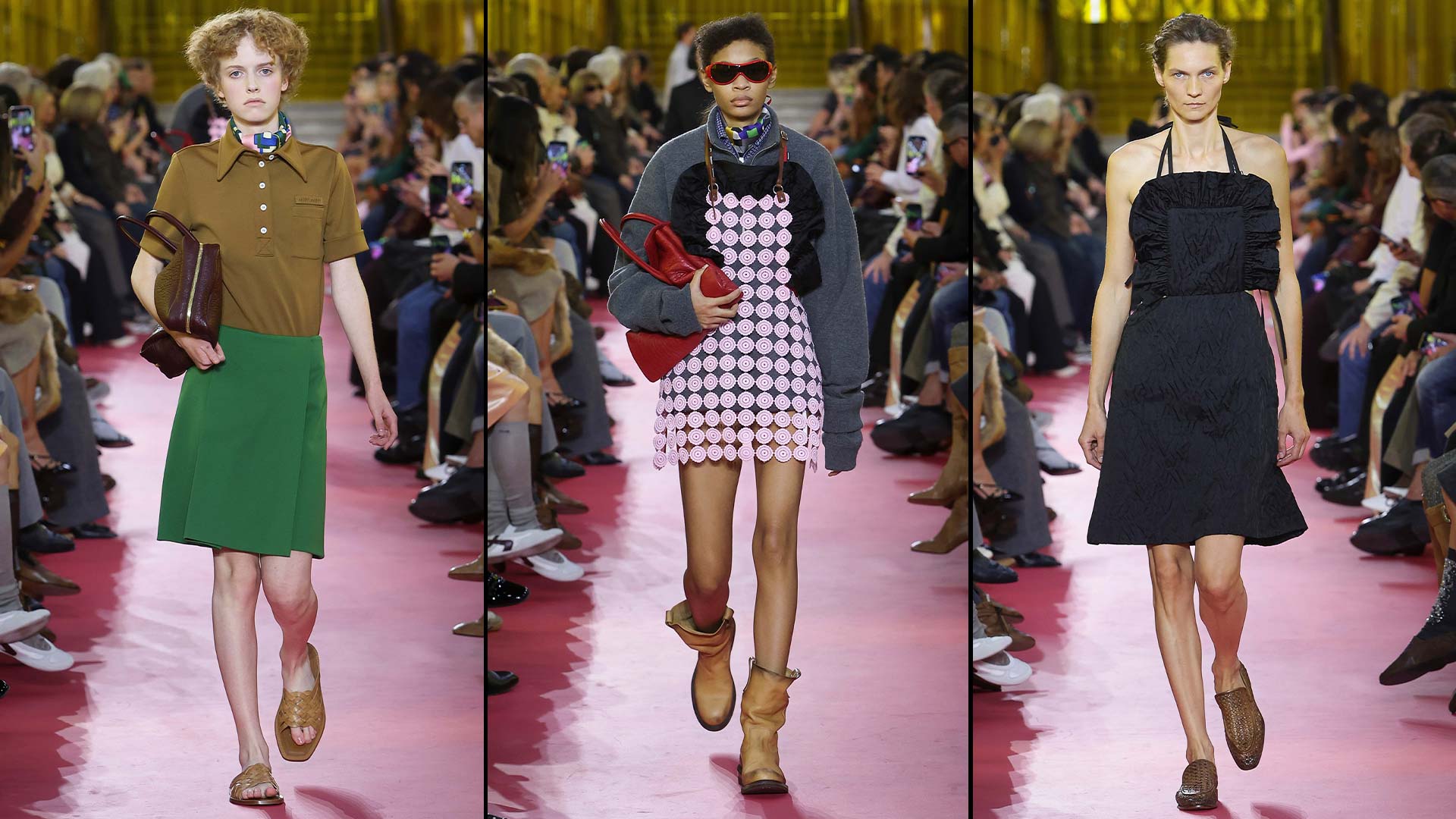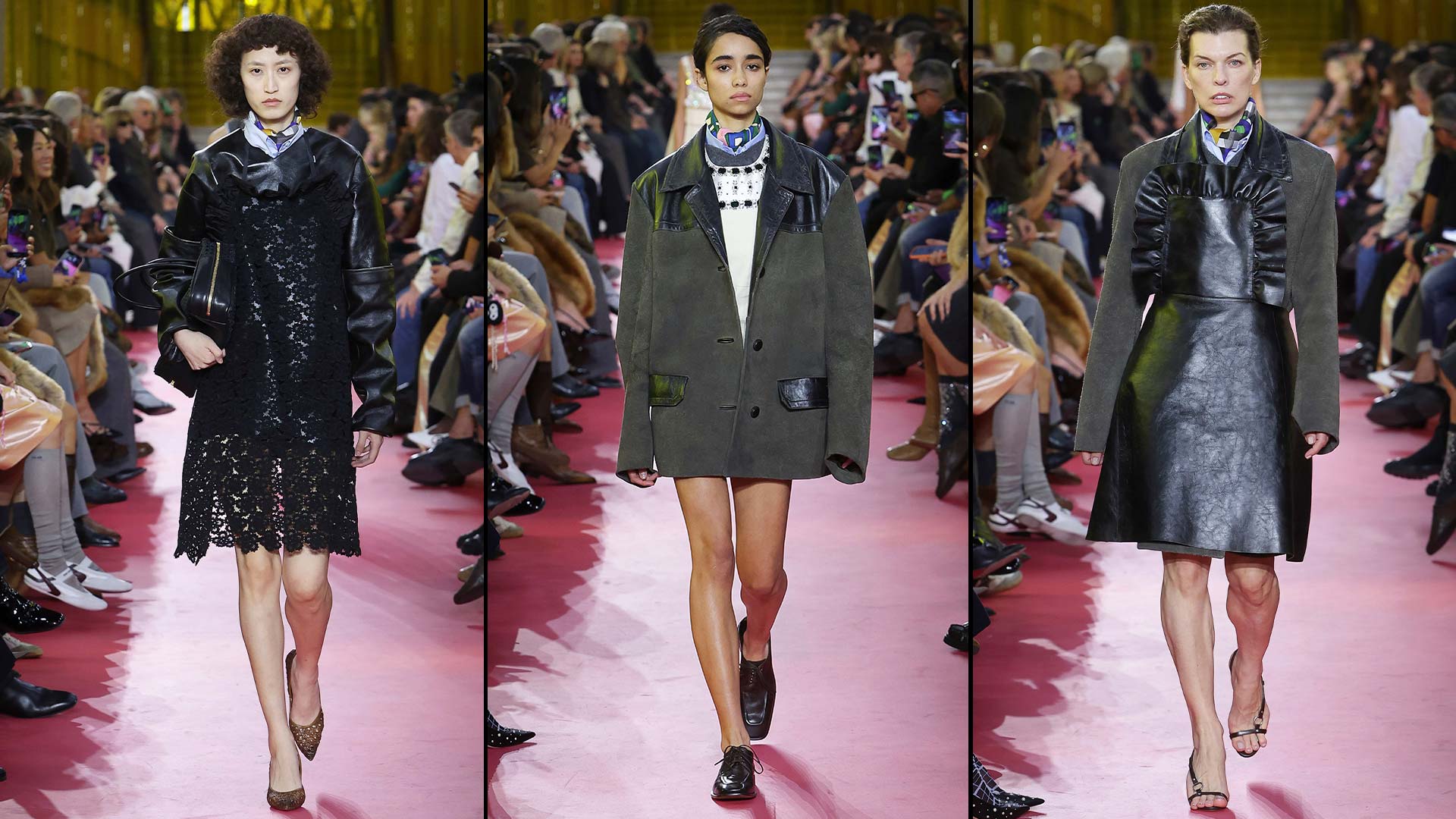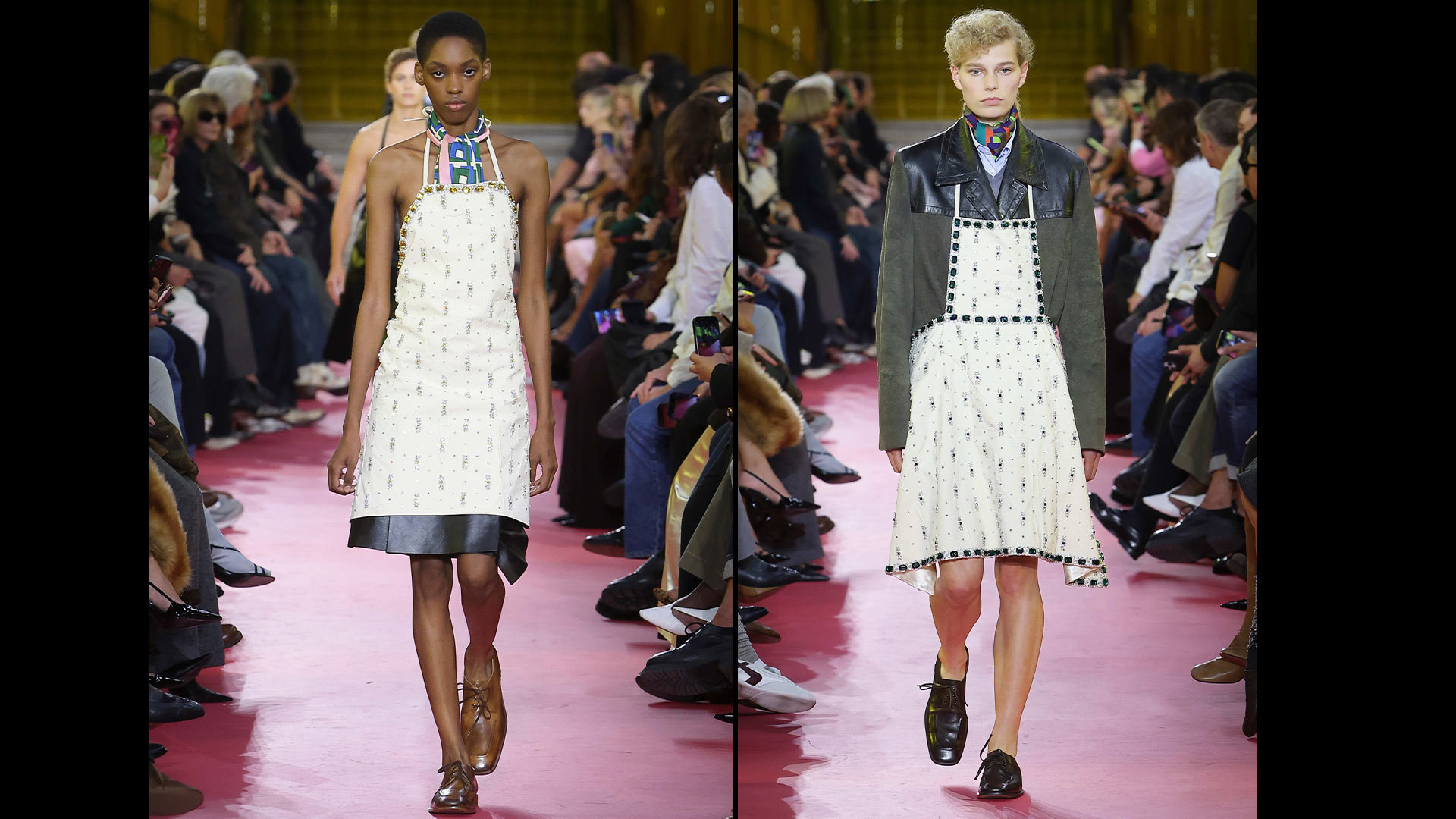仕事の重要性。それが持つ重要性、関係性、そして意味。ミウッチャ・プラダによるミュウミュウ 2026年春夏コレクションは、女性の仕事、彼女たちの挑戦、逆境、経験についての考察です。その不可視性は対峙され、対処され、認識され、価値が与えられます。
努力の表現としての仕事。ケアと愛の象徴としての仕事。独立性を反映する仕事、主体性を持つ手段。エプロンは、仕事の普遍的なシンボルとして、気品と尊敬を与えられています。機能と目的についての考察。エプロンは実用的でありながら装飾的でもあります。この衣服の文化的意味は、素材化と形状の変化に応じて、家庭的なものから臨床的なもの、産業的なもの、肉体労働から介護、第一次産業と第三次産業、そして家庭の領域へと劇的に変化する可能性があります。一着の衣服に多様性が含まれています。
これらの受け継がれた美的引用の間を移動することで、感情が置き換えられます。ドロシア・ラング(1895-1965)とヘルガ・パリス(1938-2024)のドキュメンタリー写真における工場労働の観察は、衣服の現実に対する視点を提供します。工業用ドリルとレザー、コットンポプリン、シルククロケ、レース、刺繍入りの生キャンバス。靴、ハンドバッグ、アクセサリーは、力強いレザーで、頑丈さと実用性、そして工業的な美しさを表現しています。フリルは、女性らしさの最も基本的なシンボルであり、変化をもたらします。タフさと甘さ。社会的定義、影響、期待への挑戦と逆転。
ショーの舞台美術は、職場として使われているイエナ宮の列柱ホールを、日常の家庭的な空間を抽象的に表現した場へと変えています。対照的な色合いのフォルマイカテーブルのフィールドによって区切られています。
“I want to talk about women’s work, using my work. Women’s work – from factories, to service, to care-giving and the home. Across all, the apron as a symbol of work that can express multiple messages and ideas about all these different genres of work. And deeper, it talks about the effort and challenges of women.”
“The apron is my favorite piece of clothing – it is something I have been obsessed with, from before even my earliest collections, and it has always been present in Miu Miu. This is the first time we have made it the focus of a collection. The apron fascinates me as an emblem. It symbolizes women, from factories through to serving to the home. It is about protection and care – for me, it is a symbol of the effort and hardship of women.”
“This collection was the result of an enormous amount of research, into reality, reflections of real dress. The photography of Dorothea Lange and Helga Paris, documenting working women across the last century; Louis Malle’s film Humain, trop Humain (1974). Luis Buñuel’s Le journal d’une femme de chambre (1964) – while fiction, has a root in reality. We observed them all. Malle filmed in the Citroën factory in Rennes in 1972 – that is a true window into the lives of women.”
Miuccia Prada

